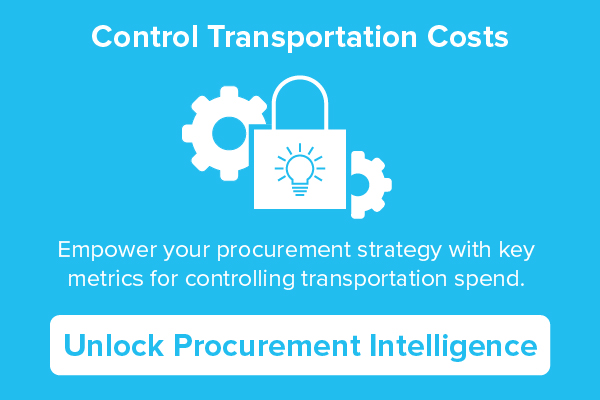In this post, we’ll cover declared value and declared value coverage.
Here's 5 Dirty Secrets About Declared Value Coverage
- There's a minimum charge once you go over $100 in value.
- The carrier will add $1.05 on top of the minimum charge at a certain level.
- Not all packages should be insured.
- You don't have to use UPS's or FedEx's insurance options
- Carrier insurance options can be combined with 3rd Party insurers.
Secrets are no fun. Especially declared value insurance secrets. Because without the right info, you might end up paying way more than you need to. But don't worry, we'll explain everything below. We even made a video.
Just like everything else with UPS and FedEx, declared value insurance can be confusing. If you have any questions, or need help assessing the best shipping insurance options for your packages, Lojistic can help.
You might be asking yourself, "Is UPS insurance worth it?" "Is FedEx insurance worth it?" "Should I use a 3rd Party insurer?" Regardless of which insurance option is best for you, Lojistic can ensure you're as efficient as possible with your spend.
We're betting you're here to learn how you can cut shipping costs. Smart! You've come to the right place. If you haven't yet, set up your free Lojistic account. It takes less than a minute.
Let’s start by explaining what declared value insurance and declared value are.
What Is Declared Value?
Declared value, in the context of shipping and logistics, refers to the monetary worth assigned to goods or shipments during the shipping process. It represents the stated value of the items being transported, allowing carriers, insurers, and customs authorities to determine factors such as shipping fees, insurance coverage, customs duties, and taxes. The declared value serves as an estimation or valuation provided by the shipper, highlighting the maximum value for which the goods are insured during transit.
What Is Declared Value Coverage?
Declared value coverage is any value that a shipper will put on the contents of what they're shipping. When shipping valuable items, it is common practice to obtain insurance coverage to safeguard against potential loss, damage, or theft that may occur while the goods are being transported.
What Is The Purpose of Declared Value Insurance?
The purpose of declared value and insurance is to provide financial protection and mitigate risks associated with shipping valuable goods or shipments.
Together, declared value and insurance work hand in hand to ensure that the value of goods is accurately represented and that financial protection is in place to safeguard against potential risks and losses during transit.
Declared value is offered by most carriers, including FedEx and UPS. Some carriers have specific guidelines for this particular insurance, which we’ll discuss in more detail below. However, the pricing is essentially the same throughout the industry.
How Does Declared Value Insurance Pricing Work?
If a freight broker or shipper is new to declared value insurance, it’s important to understand how pricing works.
For both UPS and FedEx, insuring the first $100 of declared value is free. In other words, if you declare anything up to $100, you get that insurance for free and you can be reimbursed that value.
If you claim an amount over $100, however, even by one penny, they will charge you. The minimum is $3.15 for FedEx and UPS. You don't tack more on until after about $300, and it’s roughly $1.05 after that.
Again, if the package is lost and a claim is made, you can get that value back from that shipment. If it reaches the recipient and the box is destroyed or the contents inside are damaged, you can get that cost back as well.
It’s important to reiterate the $100 threshold because you can incur charges if you’re not careful.
For example, if you insure a package with a declared value of $101, the first $100 is free, but you’ll pay UPS or FedEx $3.15 in fees for $1 of value. Which is not ideal for optimizing your shipping costs.
What Packages Need Insurance?
Certain shipping characteristics, package types, commodities, and more must be considered for insuring declared value. It's different for every company, every situation.
The following types of packages often benefit from shipping insurance: high-value items, fragile items, irreplaceable items, time-sensitive deliveries, international shipments, and bulk shipments.
You’ll want to start by analyzing what you're shipping, how often it gets lost or damaged in transit, and then make your decision based on that. You can get a free shipping analysis by creating a FREE Lojistic account.
Third-Party Insurance Options for Shippers
Shippers who want to insure their packages but don't want to use the declared value coverage options that FedEx and UPS offer can choose a third-party option.
In fact, third-party insurers will do it for a fraction of the cost. They have no minimums, and they won’t have that $3.15 after a $100 charge. Rates can be as low as 40 cents for every $100, so if you ship something that's worth $200, it will cost 80 cents as opposed to $3.15.
Workaround Options
Experienced shippers who understand how to use declared value can get that first $100 free and then insure the remaining amount in a more cost-efficient way.
By starting with the $100 initial free coverage from FedEx or UPS, shippers can insure the extra amount with a third-party insurer.
Let's use $200 as an example. You can insure the remaining $100 through a third party, which only costs 40 cents, after getting the first $100 for free.
Avoid Overpaying on Declared Value Insurance
Certain industry tools and visibility can help prevent a client or a shipper from overpaying on insurance.
As we mentioned above, start by looking at your shipping analytics. Analyze how much you're spending on those declared value insurances that are over $100. And make sure that what you’re shipping is actually valued at higher than $100.
For example, sometimes you can put a declared value on something that's worth less than $100, and then you're paying for declared value insurance with the carriers for no reason.
That data and information is readily accessible on the Lojistic platform through the custom shipping reports. A view shows you the costs for declared value insurance, so you can look at exactly what shipments you are getting dinged on for those declared value costs.
Shipping Insurance Cost Increases & Static Rates
The cost of UPS and FedEx declared value insurance increases regularly.
They seem to do it on a yearly basis. Back in 2016, it was $2.70, and they've been upping at about 15 cents per year, to $3.15 now. And that's just the minimum — the supplementary cost has gone up as well. It was 50 cents, then 60 cents, 70 cents, and now it's $1.05.
It’s possible, however, to lock in a static insurance option through a third-party insurer. Lojistic's solution has one, and the rates we can plug you into haven't changed in five years, it's been 40 cents for every $100 for a long time.
For more information on how you can join the thousands of shippers nationwide using Lojistic to send cost packing, please contact us.
You've made it to the end of the post! Congrats. Now you know the carriers' dirty secrets about declared value insurance. To uncover deep cost savings opportunities within your UPS/FedEx invoices, set up a free Lojistic account, or check out a demo account

Author
Bryan Van Suchtelen
Bryan Van Suchtelen
Corporate Director of Parcel Rate Services
Prior to joining Lojistic in 2015, Bryan enjoyed a 26-year career with UPS where his roles included Pricing, Field Sales and Director-level Sales Management of some of UPS’s largest customers.
At Lojistic, Bryan leverages his wealth of experience/expertise to identify and execute supply chain cost management solutions for parcel shippers of all sizes. Bryan has helped his customers reduce their shipping spend by tens of millions of dollars.


